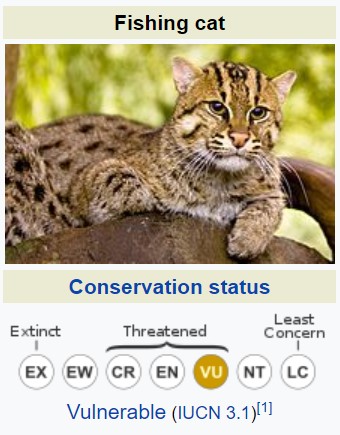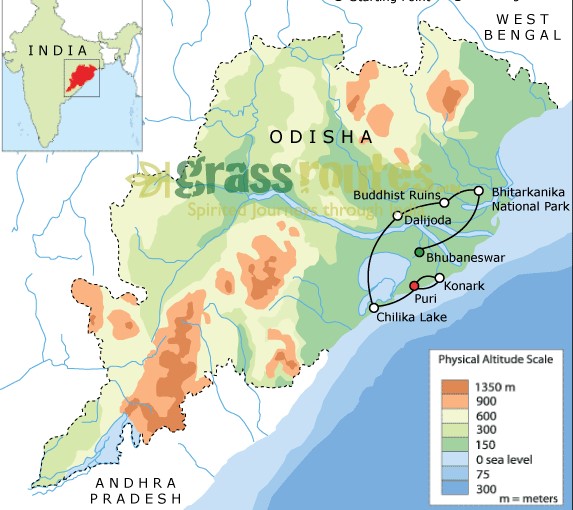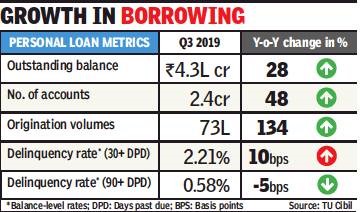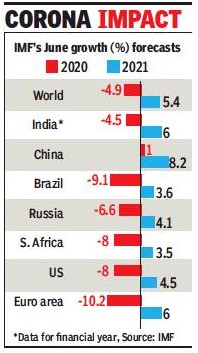Contents
- Odisha to conserve Bhitarkanika fishing cats
- RBI supervision of Urban, multi-State cooperative banks
- RBI slams banks, NBFCs regarding Digital loan agents
- COVID-19 widened educational divide: UNESCO
- IMF sees 4.5% contraction for India in 2020-21
- Pakistan to remain on FATF grey list
ODISHA TO CONSERVE BHITARKANIKA FISHING CATS
Focus: GS-III Environment and Ecology, Prelims
Why in news?
The Odisha forest department has started a two-year conservation project for fishing cats in Bhitarkanika National Park in Kendrapara district.
Details
- A new management plan to conserve fishing cats at the national park, including mapping and survey of the cat population was devised.
- A census to find out the exact numbers of the fishing cat — a nocturnal species that is not easy to trace — will be conducted during night-time.
- No exact ecological data on the population of the fishing cat in the park is available as of now.
Fishing cat

- The fishing cat is a medium-sized wild cat of South and Southeast Asia.
- It is listed as Vulnerable on the IUCN Red List.
- It is included on CITES Appendix II, and protected by national legislation over most of its range.
- Fishing cat populations are threatened by destruction of wetlands and have declined severely over the last decade, as it lives foremost in the vicinity of wetlands, along rivers, streams, oxbow lakes, in swamps, and mangroves.
- The fishing cat is the state animal of West Bengal.
In India, its presence has been documented in:
- Ranthambhore Tiger Reserve, in Dudhwa and Valmiki Tiger Reserves, in Sur Sarovar Bird Sanctuary,
- outside protected areas in West Bengal, in Lothian Island Wildlife Sanctuary in the Sundarbans,
- in Odisha’s Bhitarkanika Wildlife Sanctuary and coastal districts outside protected areas,
- in Andhra Pradesh’s Coringa Wildlife Sanctuary, Krishna Wildlife Sanctuary and adjoining reserve forests.
The conversion of mangrove forests to commercial aquaculture ponds is a major threat in Andhra Pradesh, where the targeted killing of fishing cats is also prevalent where there is human/animal conflict.
Bhitarkanika National Park

- Bhitarkanika National Park is a national park in northeast Kendrapara district in Odisha in eastern India, and it obtained the status of a Ramsar site in 2002.
- It is surrounded by Bhitarkanika Wildlife Sanctuary.
- Gahirmatha Beach and Marine Sanctuary are to the east, separating swamp region and mangroves from the Bay of Bengal.
- The national park and wildlife sanctuary is inundated by the rivers Brahmani, Baitarani, Dhamra, Pathsala.
- It hosts many mangrove species, and is the second largest mangrove ecosystem in India.
- The national park is home to Saltwater crocodile, Indian python, king cobra, black ibis, darters and many other species of flora and fauna.
-Source: Down to Earth Magazine
RBI SUPERVISION OF URBAN, MULTI-STATE COOPERATIVE BANKS
Focus: GS-III Indian Economy
Why in news?
To ensure that depositors are protected, the Centre has decided to bring all urban and multi-State cooperative banks under the direct supervision of the Reserve Bank of India (RBI), with the Union Cabinet approved an ordinance to this effect.
Details
- In a landmark decision, the urban cooperatives and multi-State cooperative banks have been brought under RBI supervision process, which is applicable to scheduled banks.
- Currently, these banks come under dual regulation of the RBI and the Registrar of Co-operative Societies.
- The move to bring these urban and multi-State coop banks under the supervision of the RBI comes after several instances of fraud and serious financial irregularities.
Powers of RBI
- Finance ministry has listed powers that central bank enjoys under Banking Regulation Act, 1949, under Banking Companies (Acquisition & Transfer of Undertakings) Acts of 1970 & 1980 (Bank Nationalization Acts) & State Bank of India Act, 1955:
- RBI maintains central fraud registry & banks report all frauds, involving amount above Rs. 1 lakh, to RBI.
- Banking regulation Act, 1949 is legislation aimed at regulating & supervising banking companies.
- Banking company is defined in section 69 (c) of that Act as ‘any company’, which transacts business of banking in India. State Bank of India & nationalised banks which are PSBs, are not companies, but corporations formed by statutes.
Under Provisions of Banking Regulation Act, 1949, RBI Can:
- Inspect bank & its books & accounts
- Examine on oath any director or other officer of bank
- Cause scrutiny to be made of affairs of bank
Give directions
- in public interest
- in interest of banking policy
- in interest of depositors
- in interest of bank
- to secure proper management of bank
- Call for any information of account details
- Determine policy in relation to advances by bank
- Direct special audit of bank
- Direct bank to initiate insolvency resolution process in respect of default, under provisions of Insolvency & Bankruptcy Code, 2016
- Issue directions to banks for resolution of stressed assets
- Direct changes in management of bank
- Caution or prohibit banks in particular against entering into any particular transaction or class of transactions, & generally give advice to any bank
- Give assistance to any bank by means of grant of loan or advance
- Direct banks to call meeting of its directors for purpose of considering any matter relating to or arising out of affairs of bank; or require officer of bank to discuss any such matter w/officer of RBI
- Appoint one or more of its officers to observe manner in which affairs of bank or of its offices or branches are being conducted & make report thereon
-Source: The Hindu
RBI SLAMS BANKS, NBFCS REGARDING DIGITAL LOAN AGENTS
Focus: GS-III Indian Economy, Science and Technology
Why in news?
Concerned over the practices adopted by some of the digital lending platforms, the Reserve Bank of India (RBI) has cracked down on them and imposed several conditions for banks and non-banking finance companies (NBFCs) that lend through them.
Details
- The Reserve Bank of India (RBI) found violation of fair practices code by digital platforms that act as an agency of these lenders to sell loans.
- The RBI said it found the platforms tend to portray themselves as lenders without disclosing the name of the bank/ NBFC at the back end as a result of which customers were not able to access grievance redressal avenues available under the regulatory framework.
- The RBI said it was concerned due to non-transparency of transactions and violation of guidelines on outsourcing of financial services and Fair Practices Code.
- Henceforth, any bank or NBFC that uses a digital lending platform has to provide the borrower a loan agreement on its letterhead.
- It must also disclose the names of the digital lending platforms it partners on its website.
How were lending apps involved in malpractice?
- The RBI’s guidelines come after reports that app-based lenders are using underhand methods for recovery of loans during the lockdown.
- Since most of the app-based lenders ask for full access to the phone contacts, some are using this information to reach out to those on the contact list of borrowers.
- There have also been instances where the defaulting borrower has been blackmailed by recovery agents threatening to use private information.
- App-based lenders did not disclose the actual cost of the loan and in many cases, the lending platforms did not divulge who the actual lender is, thereby denying the borrower an opportunity for grievance redressal.

-Source: The Hindu, Times of India
COVID-19 WIDENED EDUCATIONAL DIVIDE: UNESCO
Focus: GS-II Social Justice
Why in news?
According to a UNESCO report about 40% of low- and lower-middle-income countries have not supported learners at risk of exclusion during this crisis, such as the poor, linguistic minorities and learners with disabilities.
Details
- The 2020 Global Education Monitoring Report noted that efforts to maintain learning continuity during the pandemic may have actually worsened exclusion trends.
- During the height of school closures in April 2020, more than 90% of students around the world were out of school.
Imperfect substitutes
- Education systems responded with distance learning solutions, all of which offered less or more imperfect substitutes for classroom instruction.
- While many poorer countries opted for radio and television lessons, 55% of low-income, more than 70% of lower-middle-income and more than 90% of upper-middle-income countries adopted for online learning platforms for primary and secondary education.
- India has used a mix of all three systems for educational continuity.
- Not all students and teachers have access to adequate internet connection, equipment, skills and working conditions to take advantage of available platforms.
Resources unavailable outside
- School closures also interrupted support mechanisms from which many disadvantaged learners’ benefit.
- Resources for blind and deaf students may not be available outside schools, while children with learning disabilities or those who are on the autism spectrum may struggle with independent work in front of a computer or the disruption of daily school routines
- For poor students who depend on school for free meals or even free sanitary napkins, closures have been a major blow.
- Cancellation of examinations in many countries, including India, may result in scoring dependent on teachers’ judgements of students instead, which could be affected by stereotypes of certain types of students, said the report.
-Source: The Hindu
IMF SEES 4.5% CONTRACTION FOR INDIA IN 2020-21
Focus: GS-III Indian Economy
Why in news?
The International Monetary Fund (IMF) forecast India’s economy to contract 4.5% in 2020-21, changing from its previous estimate of 1.9% expansion, in its update to the Global Economic Outlook.
Details
- The reduction in the forecast growth rate was due to longer period of lockdown and slower recovery than anticipated.
- IMF’s update said global growth is projected at –4.9% in 2020.
- The Covid-19 pandemic has had a more negative impact on activity in the first half of 2020 than anticipated, and the recovery is projected to be more gradual than previously forecast.
- China is the only major economy which is expected to post growth in 2020 with the IMF estimating it to expand by 1%.
- Over 75% of countries are now reopening at the same time as the pandemic is intensifying in many emerging markets and developing economies.

-Source: The Hindu, Times of India
PAKISTAN TO REMAIN ON FATF GREY LIST
Focus: GS-II International Relations
Why in news?
Pakistan is likely to remain on the grey list of the Financial Action Task Force (FATF).
Why does it remain in Grey List?
- For failing to comply with the (FATF) global terrorist financing watchdog’s deadline to prosecute and penalise terrorist financing in the country, Pakistan will have to remain in the Grey List.
- At the Paris plenary, the FATF had expressed serious concerns over Pakistan’s failure to complete its 27-point action plan in line with the agreed timelines.
Click Here to read more about FATF (3rd Article)
FATF Greylists
- FATF greylist is officially referred to as Jurisdictions Under Increased Monitoring.
- FATF grey list represent a much higher risk of money laundering and terrorism financing but have formally committed to working with the FATF to develop action plans that will address their AML/CFT deficiencies.
- The countries on the grey list are subject to increased monitoring by the FATF, which either assesses them directly or uses FATF-style regional bodies (FSRBs) to report on the progress they are making towards their AML/CFT goals.
- While grey-list classification is not as negative as the blacklist, countries on the list may still face economic sanctions from institutions like the IMF and the World Bank and experience adverse effects on trade.
FATF Blacklists
- FATF Blacklists is Officially known as High-Risk Jurisdictions subject to a Call for Action.
- FATF blacklist sets out the countries that are considered deficient in their anti-money laundering and counter-financing of terrorism regulatory regimes.
- The list is intended to serve not only as a way of negatively highlighting these countries on the world stage, but as a warning of the high money laundering and terror financing risk that they present.
- It is extremely likely that blacklisted countries will be subject to economic sanctions and other prohibitive measures by FATF member states and other international organizations.
Recently in news
- Pakistan had proposed the designation of four Indian nationals in 2019 under the United Nations 1267 Sanctions List.
- Pakistan expressed its disappointment over the US blocking a proposal to designate an Indian national in Afghanistan as a global terrorist.
- It alleged that these individuals were financing, sponsoring and organising terrorism inside Pakistan by providing financial, technical and material support to terrorist groups including TTP, Jamaat-ul-Ahrar and others.
-Source: Indian Express





